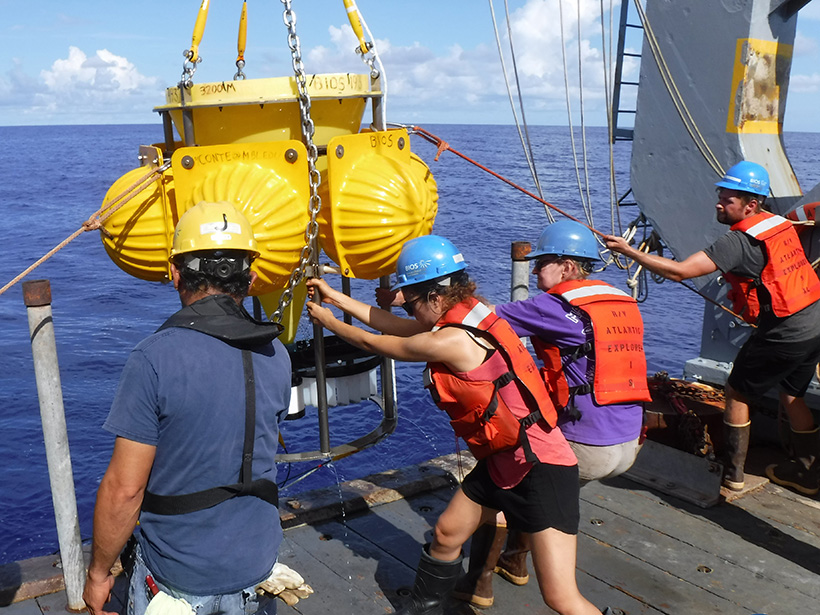Source: Geophysical Research Letters
Although scientists often assume that random variations in scientific data fit symmetrical, bell-shaped normal distributions, nature isn’t always so tidy. In some cases, a skewed distribution, like the log-normal probability distribution, provides a better fit. Researchers previously found that primary production by ocean phytoplankton and carbon export via particles sinking from the surface are consistent with log-normal distributions.
In a new study, Cael et al. discovered that fluxes at the seafloor also fit log-normal distributions. The team analyzed data from deep-sea sediment traps at six different sites, representing diverse nutrient and oxygen statuses. They found that the log-normal distribution didn’t just fit organic carbon flux; it provided a simple scaling relationship for calcium carbonate and opal fluxes as well.
Uncovering the log-normal distribution enabled the researchers to tackle a longstanding question: Do nutrients reach the benthos—life at the seafloor—via irregular pulses or a constant rain of particles? The team examined the shape of the distribution and found that 29% of the highest measurements accounted for 71% of the organic carbon flux at the seafloor, which is less imbalanced than the 80:20 benchmark specified by the Pareto principle. Thus, although high-flux pulses do likely provide nutrients to the benthos, they aren’t the dominant source.
The findings will provide a simple way for researchers to explore additional links between net primary production at the ocean surface and deep-sea flux. (Geophysical Research Letters, https://doi.org/10.1029/2021GL092895, 2021)
—Jack Lee, Science Writer
Citation:
Lee, J. (2021), Particles at the ocean surface and seafloor aren’t so different, Eos, 102, https://doi.org/10.1029/2021EO159520. Published on 10 June 2021.
Text © 2021. AGU. CC BY-NC-ND 3.0
Except where otherwise noted, images are subject to copyright. Any reuse without express permission from the copyright owner is prohibited.

